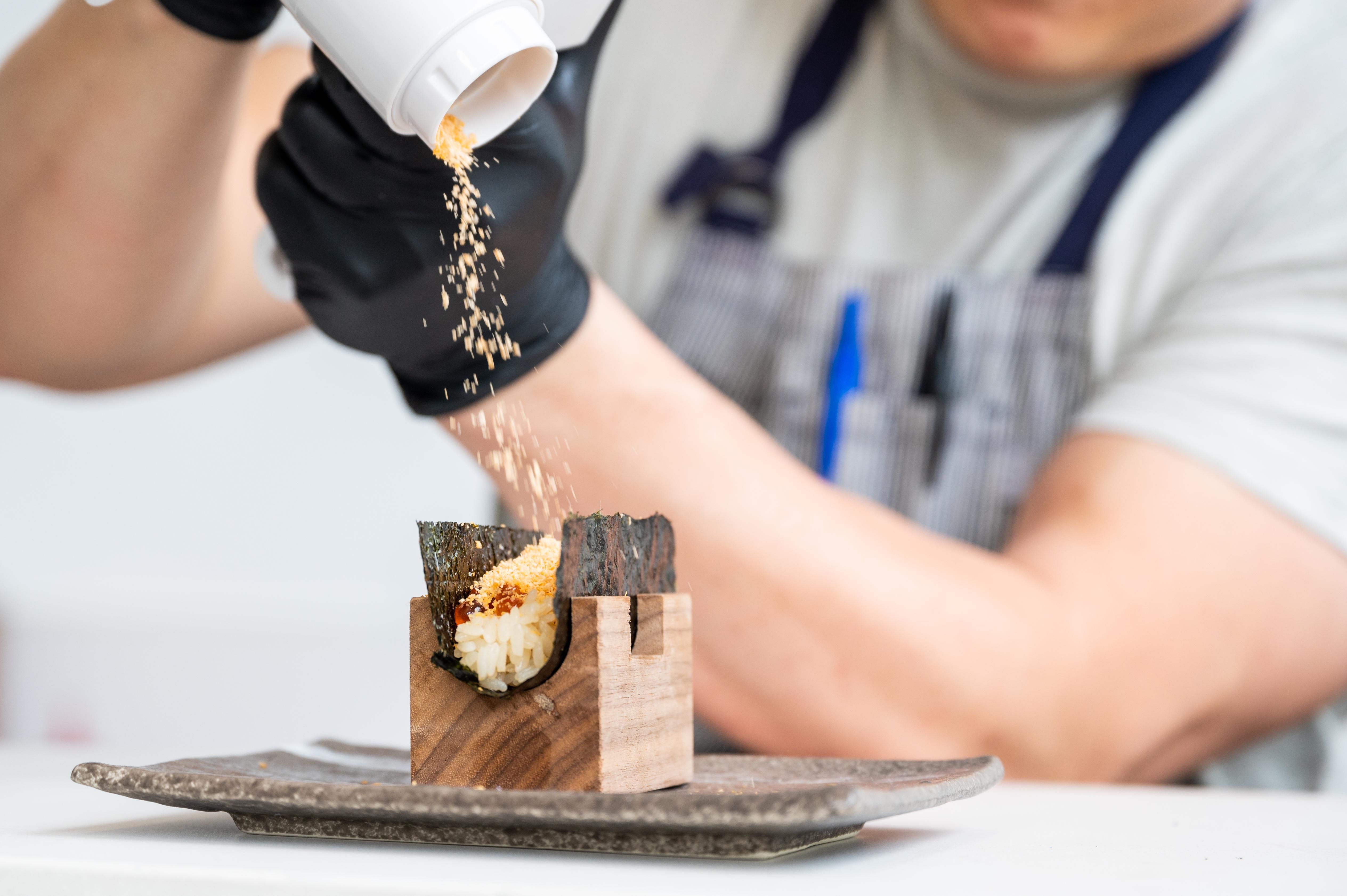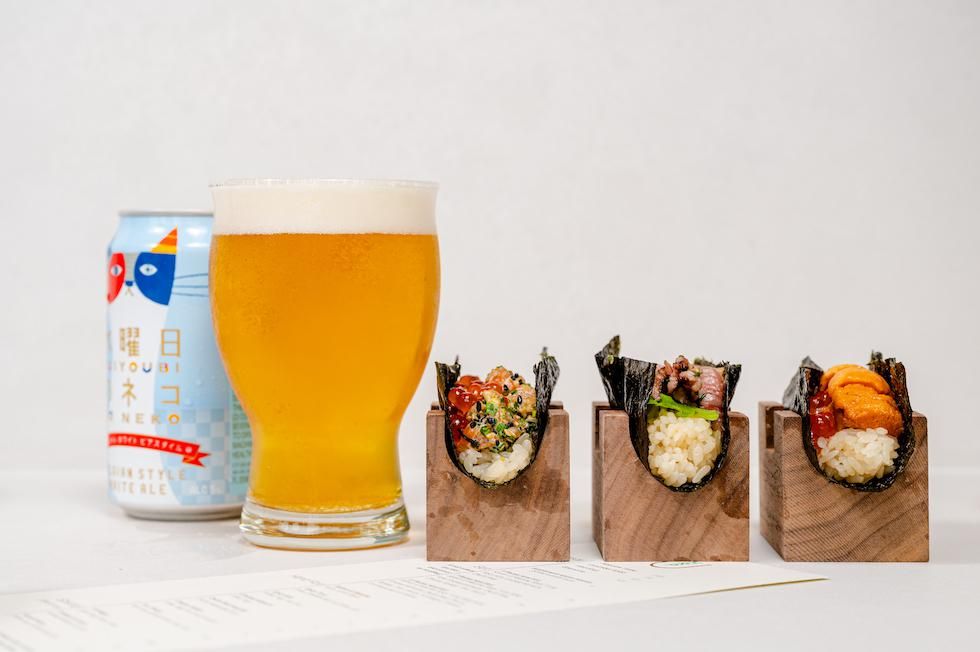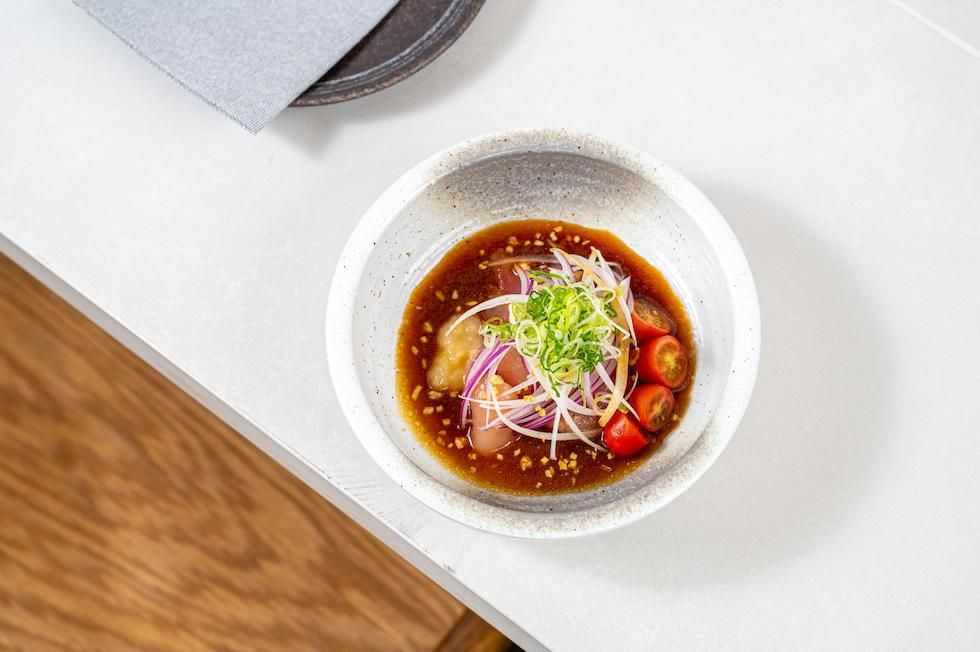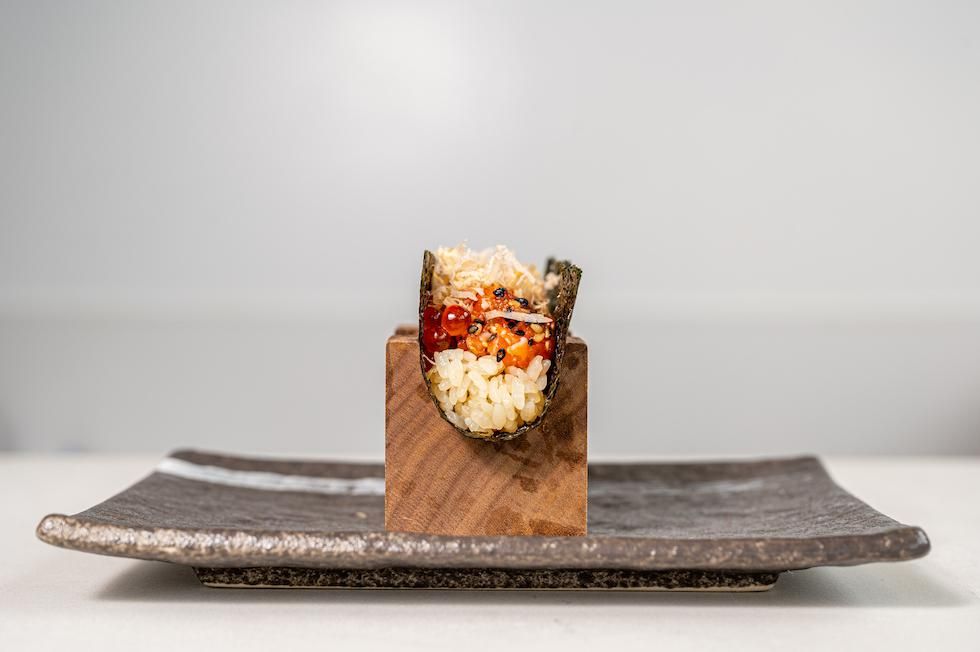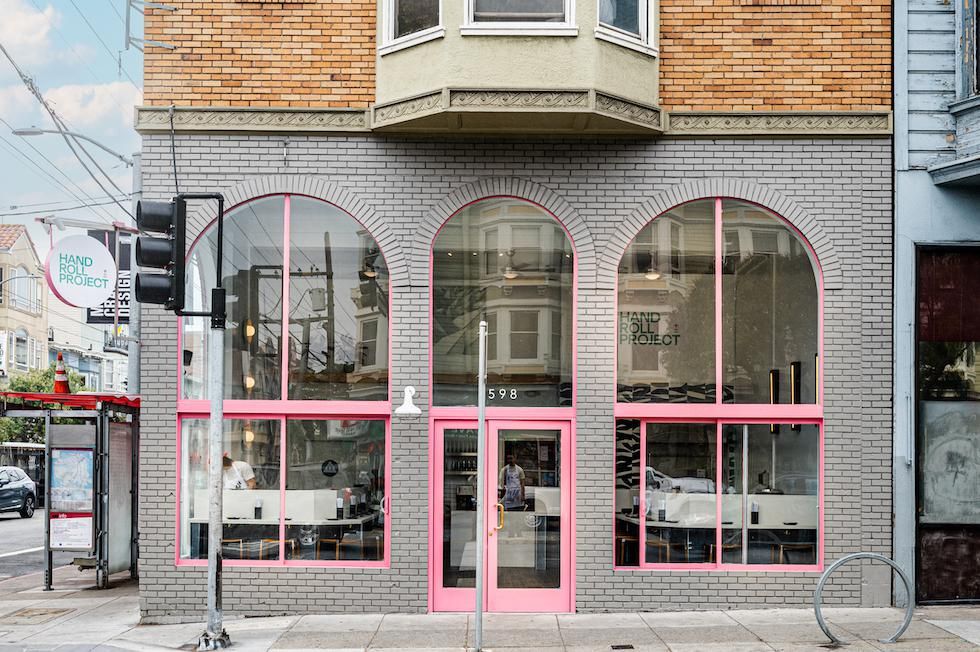San Francisco sushi lovers most likely know Ju-Ni, the Fulton Street fine omakase restaurant that's been collecting Michelin stars since 2017.
It is there that you may settle in for executive chef Geoffrey Lee's exquisite 14-course, $195 tasting of such delicacies as house cured ikura, sustainable bluefin tuna, and wagyu beef. It is also there that the chef's fresh (and affordable!) new restaurant concept was born from the need to put leftovers to use and feed the hungry staff late night.
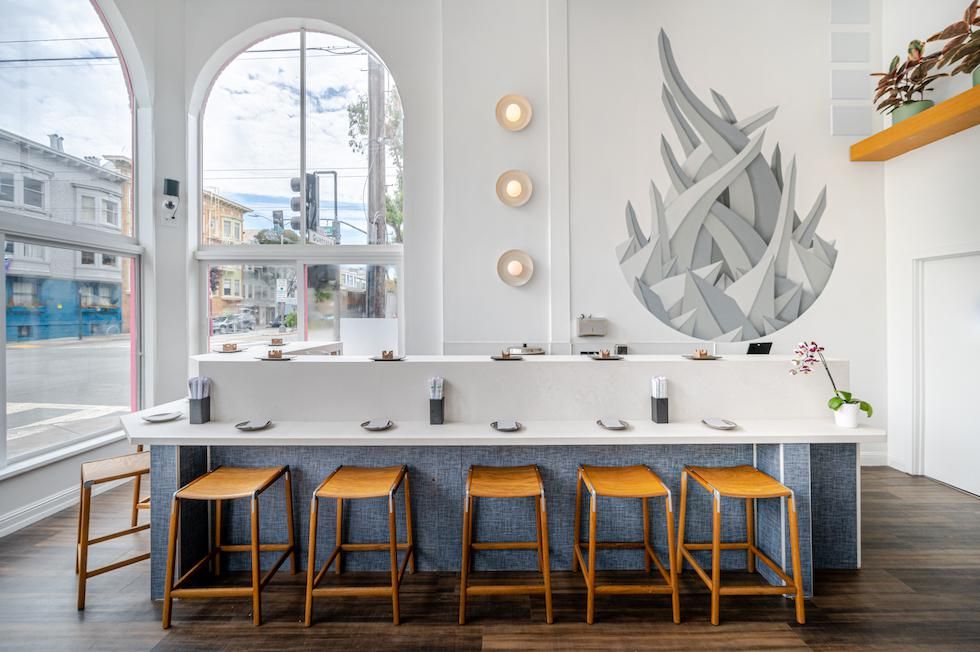
"Over the years at Jū-Ni, we would have extra product after dinner service. We would chop up the fish and make hand rolls for staff meals post-dinner. They were a hit, so we began sharing them with our VIPs at the end of the night," says Lee, who later noticed that folks gravitated to the more casual offering when ordering takeout from the restaurant during the pandemic.
With that, Lee and his partner Tan Troung (Ju-Ni, Hina Yakitori) made the decision to pursue a hand roll restaurant. They opened Handroll Project, a first of its kind in San Francisco, in the former Al's Deli space in the Mission this May.
Handroll Project has taken full advantage of the location's expansive windows to transform the interior into a bright space with white walls, blue accents, and dual gray stone counters lined with wooden bar stools to make up a total of 16 seats. A mural by Bay Area artist The Apexer covers one wall, adding some dimension to the minimalist room. Despite the decor changes inside, the pink trimmed exterior from Al's Deli remains.
The uncomplicated menu features 10 unique hand rolls (three of which are classified as "special") and a modest selection of small plates (albacore tataki, cucumber salad, miso soup, and edamame). Order the hand rolls à la carte or opt for a set of five, seven, or 10; the 10-piece option includes three of those special rolls and is a better deal than ordering each roll individually.
Each hand roll—served one at a time, following the order of the menu—delivers its own flavor profile. The experience kicks off with the salmon & sesame, made with ikura and bonito flakes, followed by an elevated version of the tried and true spicy tuna (chef Lee's favorite). Next comes spicy kani (crab) with miso aioli; and the herbaceous and refreshing smoked hamachi made with shiso and Japanese green onion). The chef's poke hand roll on our visit featured a combination of salmon, albacore, and yellowtail belly. Creamy scallop with miso aioli and avocado and toro takuan with pickled radish finished off our seven roll set.
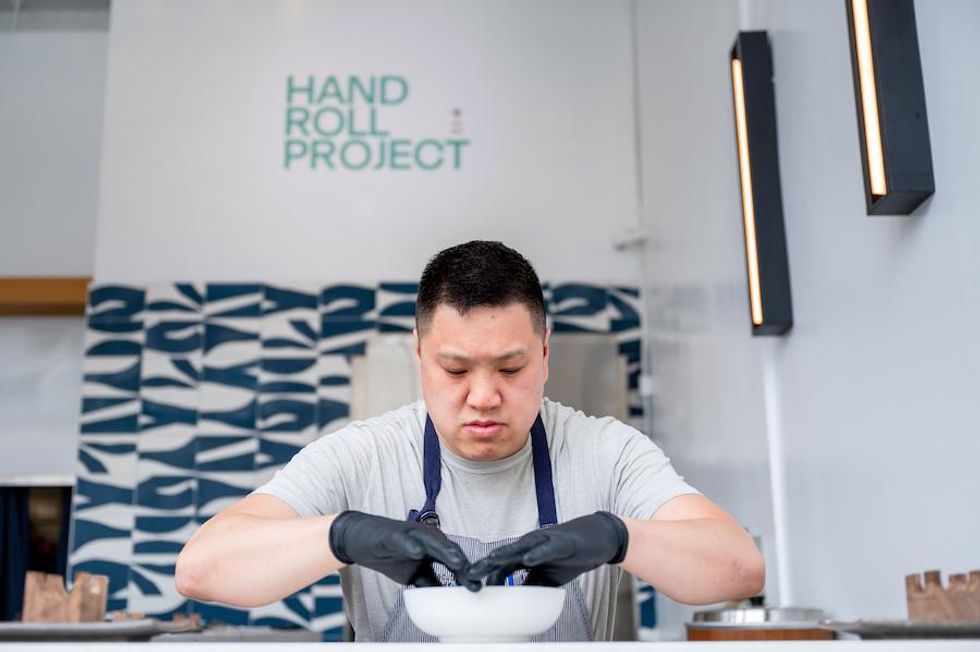
The special rolls have earned their title, with the first being a nod to Ju-Ni's signature dish, ikura & ankimo—salmon roe topped with grated monkfish liver pâté that overflows onto the plate. Of course, there's an A5 wagyu roll (with garlic chips), and the grand finale is the smoked uni & ikura, featuring Hokkaido uni that's cold-smoked with cherry wood chips for a natural hint of sweetness.
The beverage list mirrors the food in that its simple but intentional. GM and beverage manager Alice Lee (Fish & Bird Sousaku Izakaya) put together a selection of two white wines (one sparking), three sakes, and three Japanese beers, including Yoho Nippon Citrus and the rice lager beer Echigo Koshihikari.
Though the hand rolls are quite literally the meat of Handroll Project, don't miss their miso soup, made with a special white miso (saikyo) from Kyoto. Due to the fact that it's sweetened with sake lees (the byproduct from when sake is produced) and koji, it is "typically not used for soup, but rather for desserts or to marinate fish and meat," Lee explained. Regardless of what's typical, it's incredible. Though you can enjoy your soup at the beginning of your meal, it was gently recommended that we have it at the end to warm the belly and aid digestion.
You'll notice Handroll Project's rolls look different from the more recognizable cone-shaped hand rolls. Here a hand roll is more like a taco that can be eaten in three to four bites. Though this feels like a cool, modern approach, there is purpose behind the shape, and it's all about the nori.
Lee became intrigued by the unique hand roll shape after dining at Gonpachi in the Harajuku neighborhood of Tokyo. During that same trip to Japan, his fish supplier for Ju-Ni introduced him to a boutique nori shop at Toyosu market.
"Once I tasted their product I could immediately tell the difference. It was more flavorful, crispier in texture, but thicker. Overall it was more refined than what I was familiar with working within the states. If this nori was rolled into the traditional cone shape hand roll, it would layer upon itself and be too thick to notice its quality."
Handroll Project is already drawing crowds. In lieu of reservations, they use Yelp waitlist, and even that fills up fast. As a balance to the hustle to nab a seat for dinner, this summer they plan to add lunch hours and a takeout menu that will include DIY hand roll kits. Lee explained that he believes Ju-Ni found such great success with their takeout because of the restaurant's proximity to Alamo Square. "Friends would pick up their bowls at Jū-Ni and then enjoy them together in an outdoor setting to socialize during social distancing. We hope to carry that momentum to another notable public park in San Francisco: Dolores Park."
// Handroll Project is open 5pm to 9pm Wednesday through Sunday, 598 Guerrero St (Mission), handrollproject.com.



